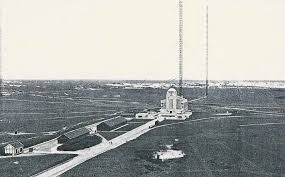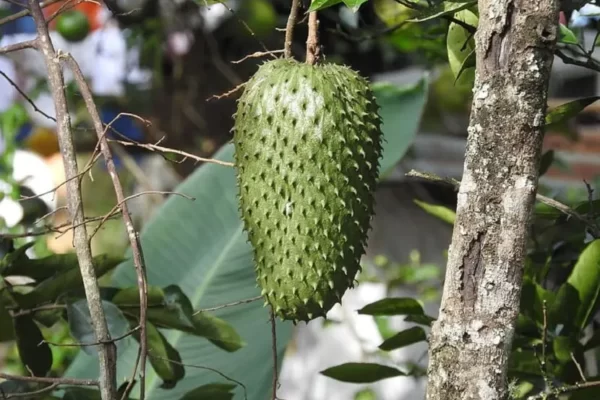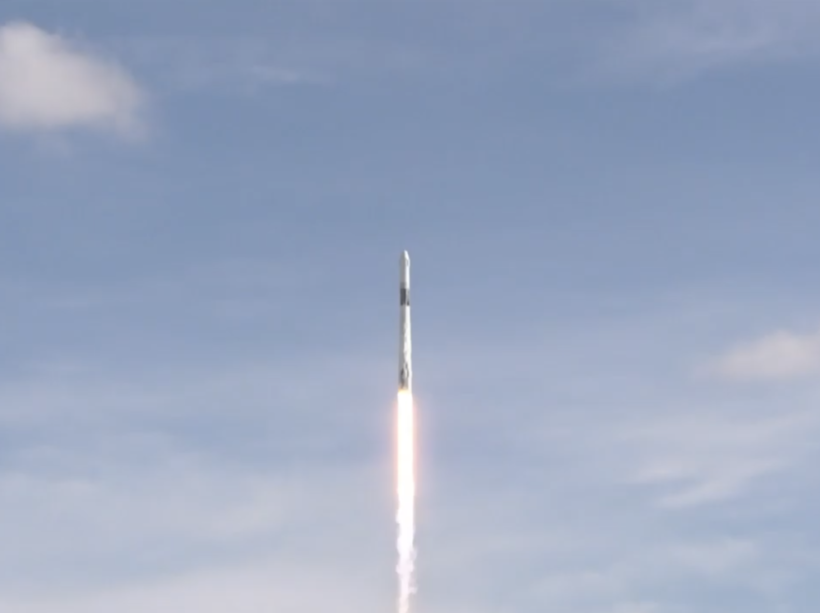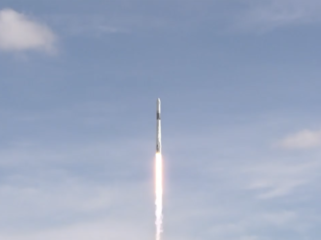
Een vracht raket van Space X vannacht gelanceerd om 00:33 t.b.v. het afleveren van 5000 pounds scientific cargo ( speciale wetenschappelijke lading voor proeven in het ISS. Zie hieronder het originele verslag:
27 July:
31 July; Upcoming Launch of Russian Progress Cargo Spacecraft to ISS Space Station; show on NASA TV start at 07:45 A.M
A Russian Progress cargo spacecraft is scheduled to launch to the International Space Station Wednesday, July 31. Live coverage of the resupply craft’s launch and docking will begin at 7:45 a.m. EDT on NASA Television and the agency’s website.
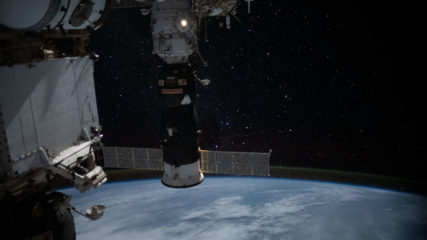
The Progress 73 spacecraft will lift off at 8:10 a.m., on a Soyuz rocket from the Baikonur Cosmodrome in Kazakhstan (5:10 p.m. Baikonur time) loaded with almost three tons of food, fuel and supplies for the residents of the orbiting laboratory.
The spacecraft will arrive at the station three hours after launch and connect to the Pirs docking compartment on the Russian segment of the complex. Rendezvous and docking coverage will begin at 10:45 a.m., with docking scheduled for 11:35 a.m.
The spacecraft will remain at the orbital outpost until mid-December.
Get breaking news, images and features about working in space on social media at:
-end-
A SpaceX Dragon cargo spacecraft is on its way to deliver the second commercial crew docking port and about 5,000 pounds of science investigations and supplies for the International Space Station after a 6:01 p.m. EDT Thursday launch from Florida.
27 July; The spacecraft launched on a Falcon 9 rocket from Space Launch Complex 40 at Cape Canaveral Air Force Station, and is scheduled to arrive at the orbiting laboratory Saturday, July 27. Coverage of the spacecraft’s approach and arrival will begin at 8:30 a.m. on NASA Television and the agency’s website.
Dragon will join three other spacecraft currently at the space station. Expedition 60 Flight Engineers Nick Hague and Christina Koch of NASA will use the station’s robotic arm, Canadarm2, to grab, or grapple, Dragon around 10 a.m. Coverage of robotic installation to the Earth-facing port of the Harmony module will begin at 12 p.m.
A key item in Dragon’s unpressurized cargo section is International Docking Adapter-3 (IDA-3). Flight controllers at mission control in Houston will use the robotic arm to extract IDA-3 from Dragon and position it over Pressurized Mating Adapter-3, on the space-facing side of the Harmony module. Hague and NASA astronaut Drew Morgan, who arrived at the station Saturday, July 20, will conduct a spacewalk in mid-August to install the docking port, connect power and data cables, and set up a high-definition camera on a boom arm.
Robotics flight control teams from NASA and the Canadian Space Agency will move the docking port into position remotely before the astronauts perform the final installation steps. IDA-3 and IDA-2, which was installed in the summer of 2016, provide a new standardized and automated docking system for future spacecraft, including upcoming commercial spacecraft that will transport astronauts through contracts with NASA.
This delivery, SpaceX’s 18th cargo flight to the space station under a Commercial Resupply Services contract with NASA, will support dozens of new and existing investigations. The space station continues to be a one-of-a-kind laboratory where NASA is conducting world-class research in fields, such as biology, physics, and materials science. NASA’s research and development work aboard the space station contributes to the agency’s deep space exploration plans, including returning astronauts to the Moon’s surface in five years and preparing to send humans to Mars.
Here are details about some of the scientific investigations Dragon is delivering to the space station:
Bio-Mining in Microgravity
The Biorock investigation will provide insight into the physical interactions of liquid, rocks and microorganisms under microgravity conditions and improve the efficiency and understanding of mining materials in space. Bio-mining eventually could help explorers on the Moon or Mars acquire needed materials, lessening the need to use precious resources from Earth and reducing the amount of supplies that explorers must take with them.
Printing Biological Tissues in Space
Using 3D biological printers to produce usable human organs has long been a dream of scientists and doctors around the globe. However, printing the tiny, complex structures found inside human organs, such as capillary structures, has proven difficult to accomplish in Earth’s gravity. To overcome this challenge, Techshot designed their BioFabrication Facility to print organ-like tissues in microgravity – a stepping stone in a long-term plan to manufacture whole human organs in space using refined biological 3D printing techniques.
Improving Tire Manufacturing from Orbit
The Goodyear Tire investigation will use microgravity to push the limits of silica fillers for tire applications. A better understanding of silica morphology and the relationship between silica structure and its properties could improve the silica design process, silica rubber formulation and tire manufacturing and performance. Such improvements could include increased fuel efficiency, which would reduce transportation costs and help to protect Earth’s environment.
Effects of Microgravity on Microglia 3D Models
Induced pluripotent stem cells (iPSC) – adult cells genetically programmed to return to an embryonic stem cell-like state – have the ability to develop into any cell type in the human body, potentially providing an unlimited source of human cells for therapeutic purposes. Space Tango-Induced Pluripotent Stem Cellsexamines how specialized white blood cells derived from iPSCs of patients with Parkinson’s disease and multiple sclerosis grow and move in 3D cultures, and any changes in gene expression that occur as a result of exposure to a microgravity environment. Results could lead to the development of potential therapies.
Mechanisms of Moss in Microgravity
Space Moss compares mosses grown aboard the space station with those grown on Earth to determine how microgravity affects its growth, development, and other characteristics. Tiny plants without roots, mosses need only a small area for growth, an advantage for their potential use in space and future bases on the Moon or Mars. This investigation also could yield information that aids in engineering other plants to grow better on the Moon and Mars, as well as on Earth.
These are just a few of the hundreds of investigations providing opportunities for U.S. government agencies, private industry, and academic and research institutions to conduct microgravity research that leads to new technologies, medical treatments, and products that improve life on Earth. Conducting science aboard the orbiting laboratory will help us learn how to keep astronauts healthy during long-duration space travel and demonstrate technologies for future human and robotic exploration beyond low-Earth orbit to the Moon and Mars.
For more than 18 years, humans have lived and worked continuously aboard the International Space Station, advancing scientific knowledge and demonstrating new technologies, making research breakthroughs not possible on Earth that will enable long-duration human and robotic exploration into deep space. A global endeavor, more than 230 people from 18 countries have visited the unique microgravity laboratory that has hosted more than 2,500 research investigations from researchers in 106 countries.
